Found a total of 10000 related content

CSS tutorial for creating loading spinners and animations
Article Introduction:There are three ways to create a CSS loading rotator: 1. Use the basic rotator of borders to achieve simple animation through HTML and CSS; 2. Use a custom rotator of multiple points to achieve the jump effect through different delay times; 3. Add a rotator in the button and switch classes through JavaScript to display the loading status. Each approach emphasizes the importance of design details such as color, size, accessibility and performance optimization to enhance the user experience.
2025-07-07
comment 0
849
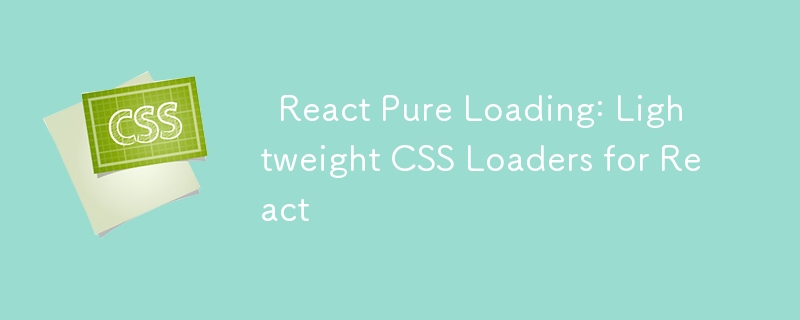
? React Pure Loading: Lightweight CSS Loaders for React
Article Introduction:React Pure Loading is a new npm package that offers a collection of lightweight and performance-focused loading animations built purely with CSS. Designed to be simple and customizable, this package is perfect for React developers who need smooth, mi
2024-11-01
comment 0
490

Celebrating the Winter Solstice
Article Introduction:In this post, I’m excited to share a winter-themed interactive web design I built using HTML, CSS, and a bit of JavaScript. The design celebrates the winter solstice, combining a beautiful, festive aesthetic with smooth animations and effects. I’ve u
2024-12-29
comment 0
1000

How to add a preloader or loading screen to an HTML website?
Article Introduction:To add loading animation to a web page, first create an animation structure and set the style with HTML and CSS, and then hide the animation after the page loading is completed through JavaScript. The specific steps are as follows: 1. Create an HTML structure for loading animations, such as a div containing a rotating icon; 2. Use CSS to set animation styles, including centered display, background color and animation effects; 3. Listen to the window.onload event through JavaScript, and hide the animation after the page resource is loaded; 4. You can combine the DOMContentLoaded event or imagesLoaded library to achieve more accurate load control; 5. Pay attention to avoiding animations hindering user interaction, adapt to mobile terminals and optimize page loading
2025-07-13
comment 0
165

My All Trending Medium Article Please Watch: Part 1
Article Introduction:1. The Psychology Behind Color Choices in UI Design
Tips for Applying Colors in UI Design.
2. 7 Magical Christmas Animations for Your Website ??
The Christmas Html, Css Animation
3. Part 2: Top 7 CSS Tricks to Make Your
2024-12-25
comment 0
329

Using CSS Transforms in the Real World
Article Introduction:CSS Conversion: A Powerful Tool to Solve Design Difficulties
This article will explore the power of CSS transformation in real-world applications, show how it can effectively solve various design challenges and create compelling visual effects. We will learn how to align elements vertically, create beautiful arrows, build load animations, and implement flip animations, etc.
CSS3 conversion became standard in 2012, and before that some browsers had already provided support. Transformation allows you to easily transform web elements, such as rotation, scaling, or tilting elements, to achieve with just one line of code, which was difficult to achieve before. CSS conversion supports 2D and 3D transformations.
In terms of browser compatibility, all mainstream browsers support 2D conversion, including Inter
2025-02-10
comment 0
1118
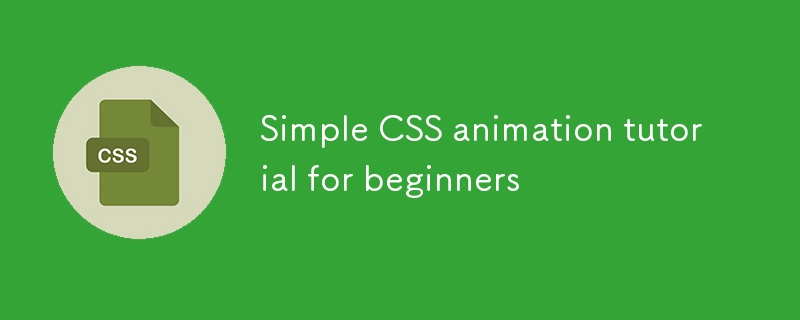
Simple CSS animation tutorial for beginners
Article Introduction:The key to CSS animation is to master the use of @keyframes and animation attributes. 1. @keyframes is used to define animation keyframes, and set the state of different stages of the animation through from/to or percentage; 2. The animation attribute applies animation to elements, including settings such as name, duration, easing function, delay and number of playbacks; 3. The code can be simplified by abbreviated attributes, and the effect of staggered playback of multiple elements is achieved using animation-delay; 4. Pay attention to browser compatibility, performance optimization, triggering methods and keeping animations simple. By mastering these core points, you can easily create smooth and beautiful CSS animations.
2025-06-30
comment 0
700

How to show a loading state during data fetching?
Article Introduction:The loading status design can improve the experience through timely feedback, visual prompts and avoiding blank spaces. 1. Use placeholders and loading animations, such as gray fake content combined with rotating icons, or use SVG/CSS to achieve loading effect; 2. The skeleton screen imitates the real content structure more natural; 3. Control the triggering timing, and the loading status does not display within 500 milliseconds to keep the interface stable; 4. Turn off loading and display error information when the request fails; 5. Select prompt method according to the scene, such as the button becomes "loading", the page is added with the top progress bar, and the local refresh uses the disabled button small icon, table/card recommended skeleton screen; 6. After loading, be sure to clean the state to prevent residue.
2025-07-13
comment 0
779
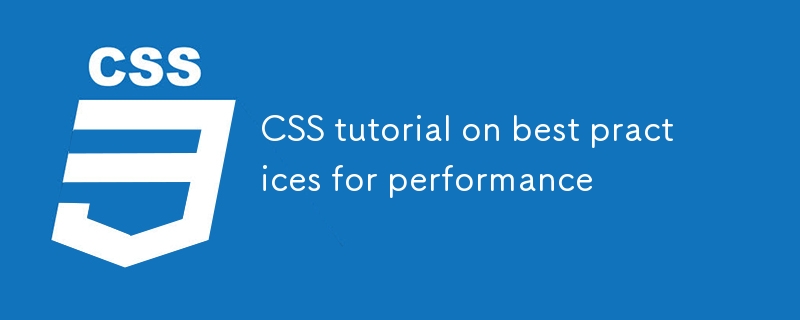
CSS tutorial on best practices for performance
Article Introduction:To improve web page loading speed, optimize CSS writing, including: 1. Reasonably organize and streamline CSS files, split them according to modules and merge and compress them through construction tools; 2. Delete unused CSS and compress code, remove spaces and comments; 3. Avoid nesting of complex selectors, and prioritize using class names to directly locate elements; 4. Reduce hierarchy depth and avoid abuse of general selectors and attribute selectors; 5. Optimize rearrangement and redrawing, use transform and opacity to implement animations, and first leave the document stream when batch modifying styles; 6. Use media queries to optimize responsive loading, mobile priority and load corresponding styles according to the device. These practices can improve loading speed, optimize maintenance efficiency and enhance user experience.
2025-07-02
comment 0
403

How to Minify HTML, CSS, and JavaScript for Faster Loading in PHP 7?
Article Introduction:This article explores PHP 7 methods for minifying HTML, CSS, and JavaScript. It compares using regular expressions, dedicated libraries (like minify), and external tools. Security and performance implications are discussed, advocating for libraries
2025-03-10
comment 0
1168

10 Very Attractive jQuery Widgets
Article Introduction:10 practical and beautiful jQuery widgets and plugins with varied functions. This article collects 10 very attractive jQuery widgets, covering smart picture gallery, text enhancers, sticky notes, picture tween animations, and more. Related blog posts: - 10 jQuery widgets - 10 amazing jQuery widgets
jQuery Masonry
A layout plugin for jQuery. Think of it as the opposite of CSS floating. Float arranges the elements horizontally and then vertically, while Masonry arranges the elements vertically and horizontally according to the grid. Source 2. Using jQuery and CSS
2025-03-05
comment 0
1108

CSS Animations
Article Introduction:CSS animation: The key tool to enhance user experience
Core points:
CSS animation is a key tool to enhance the user experience, adding depth and meaning to interactions, guiding users to browse the interface, and providing user action feedback.
While JavaScript also provides animation features, CSS is the easiest way to get started with animation. JavaScript-based animations can be more complex and resource-intensive, which may slow down page loading times on slower connections or mobile devices.
CSS animations can be launched immediately with just a web browser and text editor, an easy to access and efficient way to bring your design to life. CSS animation has great potential, from smooth transition to using keyframes to creating complex effects.
Animation is becoming a must
2025-02-17
comment 0
1163
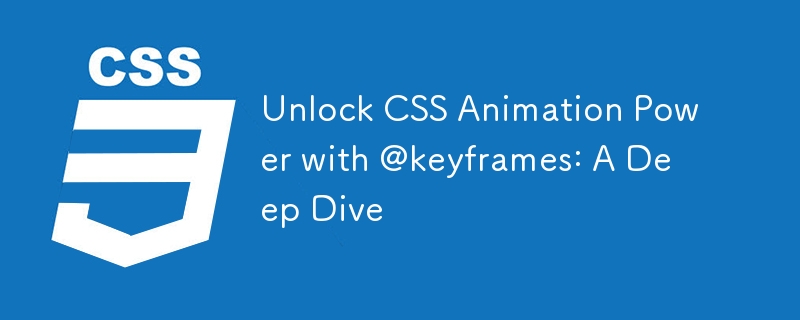
Unlock CSS Animation Power with @keyframes: A Deep Dive
Article Introduction:The full potential of unlocking CSS animations with @keyframes can be achieved through the following steps: 1) Define the start, end and intermediate state of the animation sequence; 2) Use multi-stage animation to control multiple attributes of the element; 3) Adjust the -timing function to optimize animation effects; 4) Use will-change to improve performance; 5) Choose the appropriate animation duration; 6) Use animations carefully to avoid excessive use; 7) Ensure cross-browser compatibility with vendor prefixes; 8) Dynamically control animations with JavaScript. Through these methods, you can create amazing animations that enhance web design.
2025-06-22
comment 0
193

Improving JavaScript Core Web Vitals (FID, CLS, LCP)
Article Introduction:Improper use of JavaScript will drag down web page performance and affect CoreWebVitals metrics. 1. To improve FID, the main thread blocking should be reduced, long tasks should be split, and WebWorker and asynchronous loading scripts should be used; 2. To reduce CLS, DOM operations should be controlled, element space should be reserved, CSS animations and picture placeholders should be used; 3. To speed up LCP, delay non-essential JS, adopt SSR/SSG, preload key resources, and optimize image formats and loading methods.
2025-07-22
comment 0
467
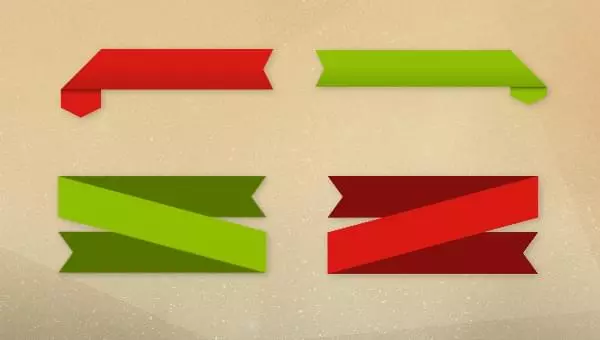
How to Create CSS Ribbon Shapes with a Single Element
Article Introduction:Using modern CSS tips, create cool CSS ribbon shapes with just a small amount of code! This article will demonstrate how to create various ribbon shapes using single elements and CSS variables and achieve beautiful hover animations without the need for fixed sizes or magic numbers.
Key points:
Modern CSS tips make it easy to create CSS ribbon shapes, controlled with just a single element and CSS variables, without the need for fixed sizes or magic numbers.
Creating a CSS ribbon shape involves defining variables that control shape and color, cropping the desired shape with clip-path, and creating folded portions of the ribbon using box-shadow.
CSS lh unit (corresponding to line-height value) is used to control the height of the ribbon, which can be compared with clip
2025-02-08
comment 0
790

Frontend Performance: First Contentful Paint (FCP) Optimization
Article Introduction:FCP refers to the first content drawing time. Optimization methods include: 1. Compress and delay non-critical resources; 2. Inline key CSS; 3. Enable server-side compression; 4. Preload critical resources reasonably; 5. Avoid blocking rendering JS operations; 6. Use asynchronous loading strategies; 7. Optimize image format and loading; 8. Using lazy loading and responsive images; 9. Use server-side rendering reasonably. These measures can effectively shorten the time for the first time of content presentation on the page and improve user experience.
2025-07-19
comment 0
187

How to use Google Fonts and font-display
Article Introduction:Core points
Google Fonts is a free open source platform that provides massive web fonts that can be used in web projects to create beautiful and consistent cross-device design.
The font-display property is the key to using Google Fonts, which controls the rendering behavior of fonts during loading and optimizes the user experience by reducing the impact of slow font loading.
There are two main ways to add Google Fonts to a project: linking and importing. Both methods involve selecting the desired font from the Google Fonts website and adding the provided code to an HTML or CSS file.
There are five possible values ??for the font-display property (
2025-02-07
comment 0
479

Frontend Performance Optimization for Mobile Devices
Article Introduction:The performance optimization of the front-end mobile terminal needs to be based on the characteristics of the mobile terminal. 1. Reduce the number of requests and resource volume on the first screen, including merging JS/CSS files, using on-demand loading, compressing pictures and selecting appropriate formats; 2. Use caching strategies to reduce duplicate loading, such as setting up HTTP cache headers, using ServiceWorker precache, and local storage of interface data; 3. Optimizing rendering performance and interactive experience, avoiding forced synchronization of layouts and long tasks, simplifying page structure, and delaying non-critical animations; 4. Use lightweight frameworks and modern features, such as choosing Preact/Svelte, enabling TreeShaking, using native APIs, enabling HTTP/2 and Brotli compression.
2025-07-20
comment 0
409
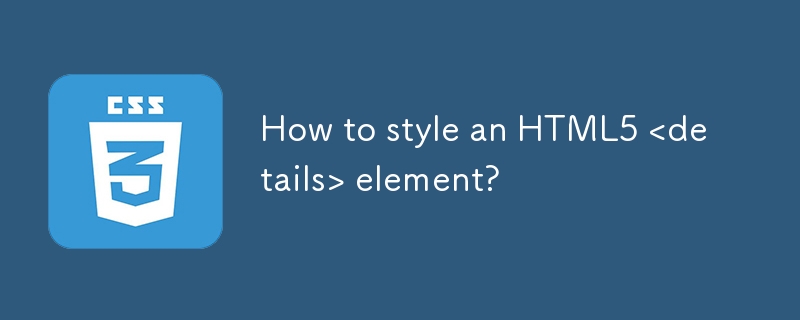
How to style an HTML5 element?
Article Introduction:To customize HTML5 element styles, you must first hide the default tag and add custom icons, and then use CSS to beautify the container and interaction effects while ensuring accessibility. 1. Set list-style:none to remove the default triangle; 2. Use the ::after pseudo-element to add custom expansion symbols (such as "?" or " ") and change to "▼" or "?" when details[open]; 3. Wrap content in a div and apply animations (such as slideDown) to achieve smooth expansion; 4. Keep cursor:pointer, focus outline and sufficient contrast to ensure usability. Finally, a beautiful and easy-to-use pull-down panel can be achieved by combining these technologies.
2025-07-27
comment 0
683

How to create a Bootstrap login form?
Article Introduction:Introduce the CSS and JS files of Bootstrap5 to build a basic environment; 2. Use containers, cards and form classes to build a centered and responsive login form structure, including email, password input box, check box and submit button; 3. Optionally add HTML5 form verification and enable Bootstrap verification style through JavaScript, combine responsive design to ensure mobile friendly, and can add prompt information or loading effects; 4. Finally, it is recommended to combine server verification, HTTPS, security mechanisms such as CAPTCHA, and customize the styles as needed to complete a safe and beautiful login form.
2025-08-01
comment 0
714



















